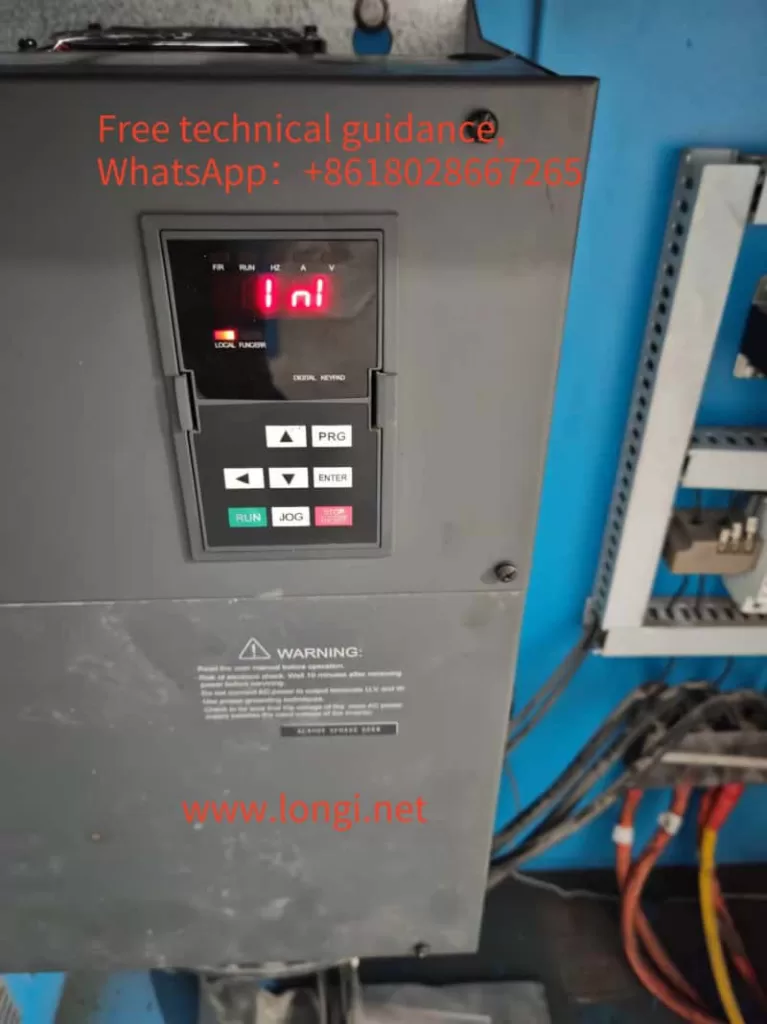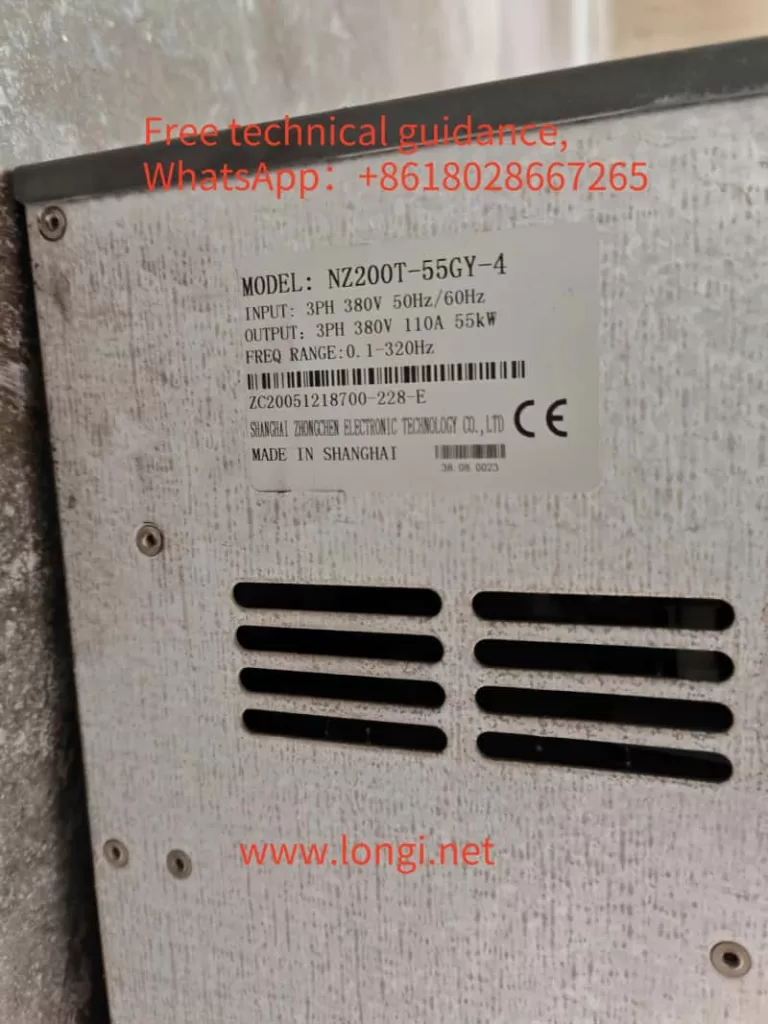I. Analysis of INI Alarm Causes

- Literal Interpretation of INI Alarm
- In VFDs, the “INI” alarm likely indicates issues or errors encountered during the device’s initialization process. This can stem from various reasons, including improper parameter settings, hardware failures, firmware issues, or external device connection errors.
- For VFDs like the NZ200T, which employs open-loop vector control, the “INI” alarm may signify the VFD’s failure to correctly complete its initialization process upon startup or reset. This could result from unsatisfied specific hardware or software conditions, leading to the interruption or failure of the initialization process.
- Initial Position Error
- The INI alarm in ZONCN VFDs typically indicates an initial position error. This may occur when the VFD fails to accurately detect the motor’s initial position at startup, preventing the control program from executing subsequent commands accurately. Initial position errors can arise from various factors, including incorrect motor parameter settings, current circuit faults, or signal transmission issues.
- Improper Motor Parameter Settings
- The NZ200T VFD requires accurate setting of various motor parameters, such as rated voltage, rated current, and power factor. Inaccurate settings, particularly a low rated current setting, will prevent the VFD from effectively adjusting to the motor’s actual load conditions, thereby triggering the INI alarm.
- Current Matching Fault or Signal Transmission Issue
- The NZ200T VFD operates in open-loop vector control mode, necessitating precise current detection for accurate model analysis. Damage to the current transformer or issues with the signal transmission lines, such as poor contact or signal interference, will affect the VFD’s accurate determination of the motor’s position, subsequently triggering the INI alarm.
- Control Mode Mismatch
- The NZ200T VFD is designed for use with synchronous motors. When connected to a standard asynchronous motor or if the control mode is not correctly set, the INI alarm may also appear. This is because different types of motors exhibit distinct operational characteristics and control requirements, necessitating corresponding adjustments to the VFD’s control strategy based on the motor type.
II. Solutions

- Recheck Motor Parameters
- Firstly, carefully verify the settings of all motor parameters, ensuring consistency with the data on the motor’s nameplate. Pay particular attention to key parameters such as rated current, which should be set according to the motor’s actual specifications to avoid INI alarms caused by improper parameter settings.
- Inspect Current Transformer and Signal Transmission Lines
- Check the current transformer for damage or looseness, and replace it if necessary. Simultaneously, inspect the connection of the current transformer’s signal transmission lines to ensure good contact and absence of signal interference. If aged or damaged lines are found, promptly replace them with new ones.
- Adjust Control Mode
- If the NZ200T VFD is connected to a standard asynchronous motor, adjust the control mode to V/F control mode. Refer to the VFD user manual for specific setting methods: set parameter P0-02 to 2 and P1-04 to 50 (V/F control). This allows the VFD to directly control the standard asynchronous motor by adjusting the frequency for speed regulation, without altering other parameters. Additionally, ensure that the VFD’s software version matches the motor type to avoid control issues due to software incompatibility.
- Seek Professional Technical Support
- If the above methods fail to resolve the INI alarm issue, it is recommended to contact longi’s technical support team or professional maintenance personnel for fault troubleshooting and repair. When contacting technical support, provide a detailed description of the equipment’s operating environment, operation process, and alarm phenomena to enable technicians to quickly identify the problem and provide solutions.
In summary, the causes of INI alarms in the NZ200T VFD are diverse and require case-by-case investigation and resolution. By reasonably setting parameters, regularly inspecting equipment status, and seeking professional technical support, the incidence of INI alarms can be effectively reduced, ensuring stable equipment operation.
